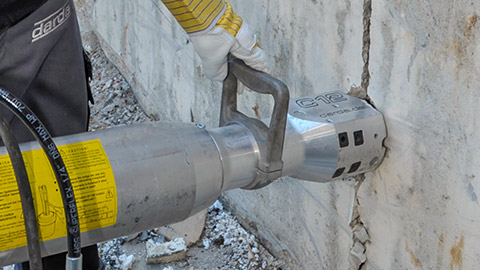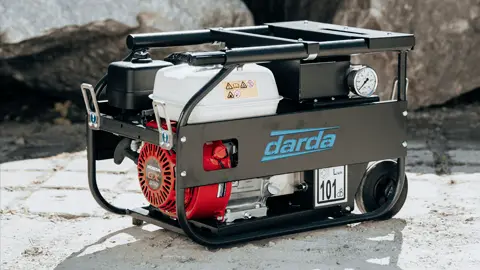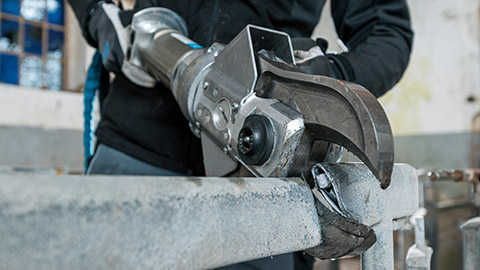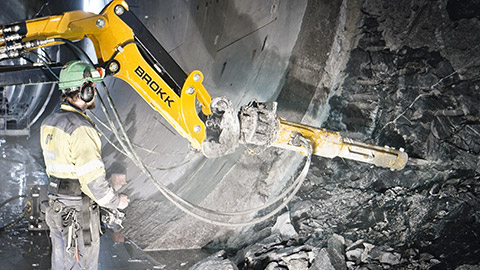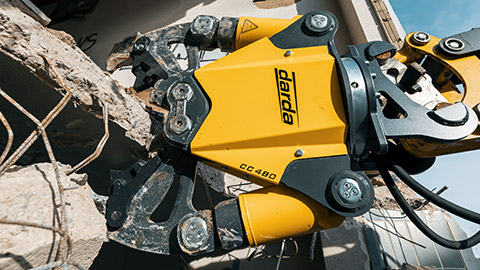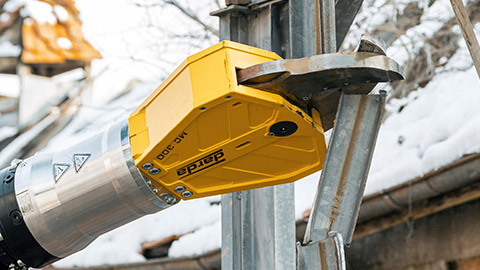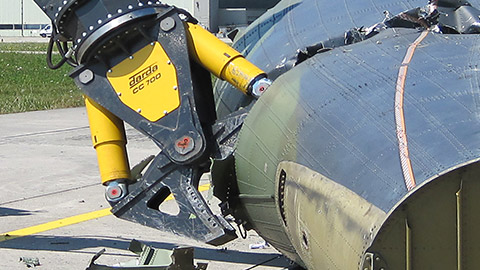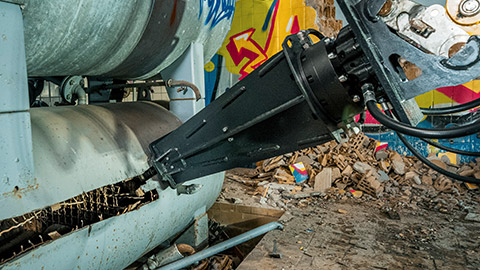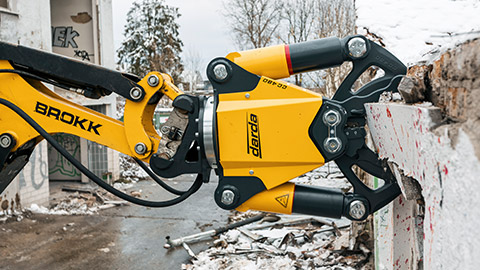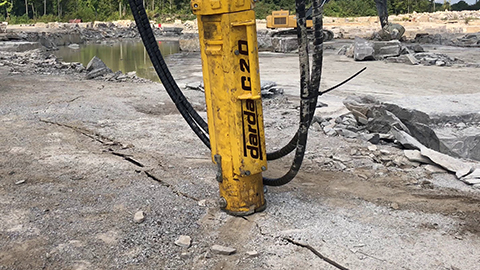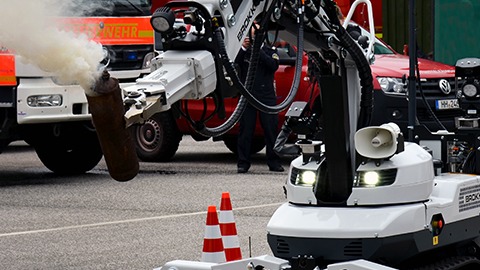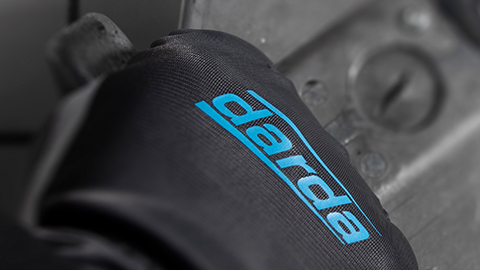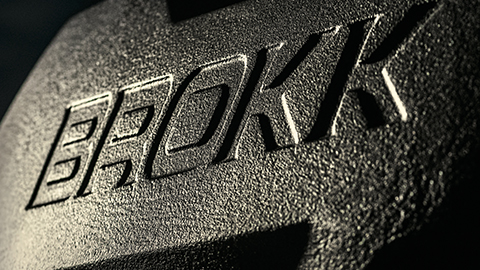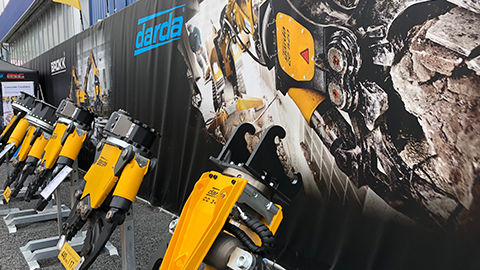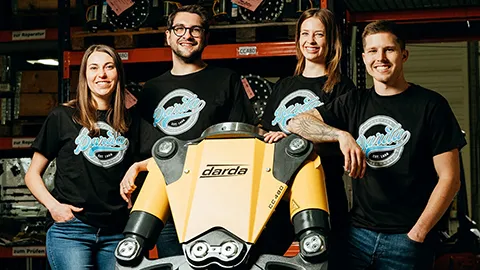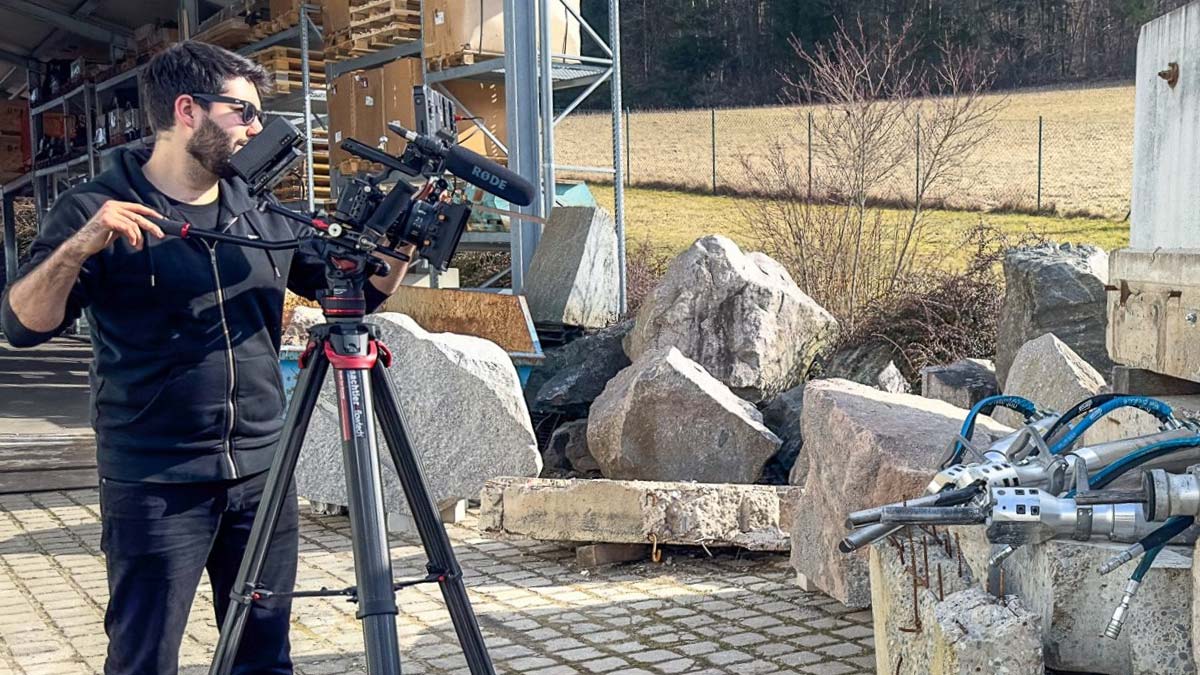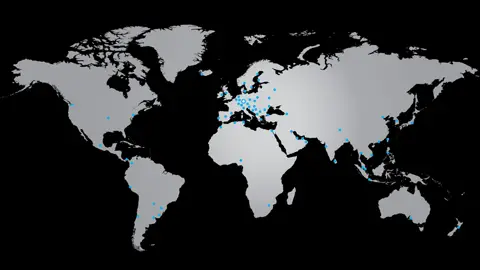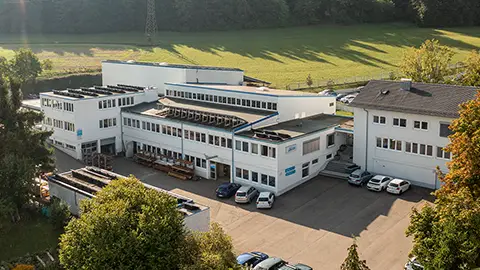Small, hydraulic demolition equipment is economical and safe
In a demolition project that is not exactly commonplace, the professionals from TAI Taucher-, Atemschutz-, Industriearbeiten GmbH were able to impressively demonstrate the performance and advantages of the Darda C12 N Splitting Cylinder and the HCS8 C Combi-Shear: In a 20 x 20 meter underwater construction pit, old concrete structures were recovered from a water depth of eight meters with the help of these two hand-held demolition devices.
Economically
and without
vibrations
The concrete bored piles with a length of up to 2.5 meters and a diameter of one meter and the reinforced foundation remains had to be removed as “gently” as possible. Vibrations or shocks could have possibly caused damage to immediately adjacent structures. Almost even more critical, however, was the “economic efficiency” factor – time is money, especially for special, unconventional demolitions. For this reason, other demolition methods, which were also under discussion, were discarded rather quickly: these were pneumatic demolition hammers (these achieve a power loss of 0.1 bar per meter of water depth), hydraulic demolition hammers, and wire saw technology. They were all too time-consuming and therefore uneconomical. Other, heavy demolition equipment was out of the question anyway due to the conditions on site.
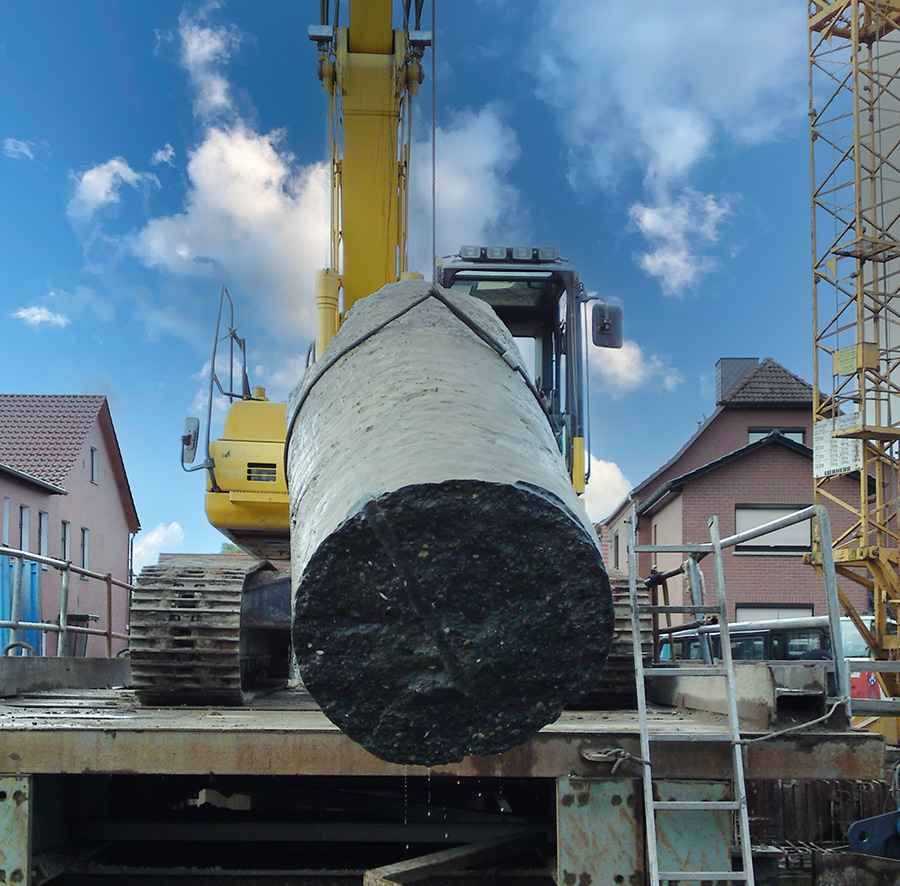
Optimal
equipment mix
A coordinated solution of hand-guided demolition equipment consisting of a core drill, a hydraulic Splitter from Darda GmbH, Blumberg, and a Darda HCS8 C Combi-Shear quickly proved to be the optimum solution. One by one, a diver first drilled a core hole horizontally at each concrete section to be demolished at the level of the predetermined breaking point. He then inserted the splitting cylinder’s splitting insert, consisting of a wedge and two counter wedges, into the hole. In hydraulic operation, the wedge pushes itself between the counter wedges, pressing them further and further against the inner wall of the borehole. With the resulting enormous effective splitting force of 3,507 kN (358 tons), the Darda splitting cylinder C12 N, weighing just 31 kilograms, splits concrete and reinforced concrete within seconds.
Connected to the hydraulic power unit on the surface via long hydraulic hoses, the demolition equipment broke the concrete structures in the excavation pit under water at the exact level of the borehole. It also expanded the material until reinforcement bars either cracked either cracked or were exposed.
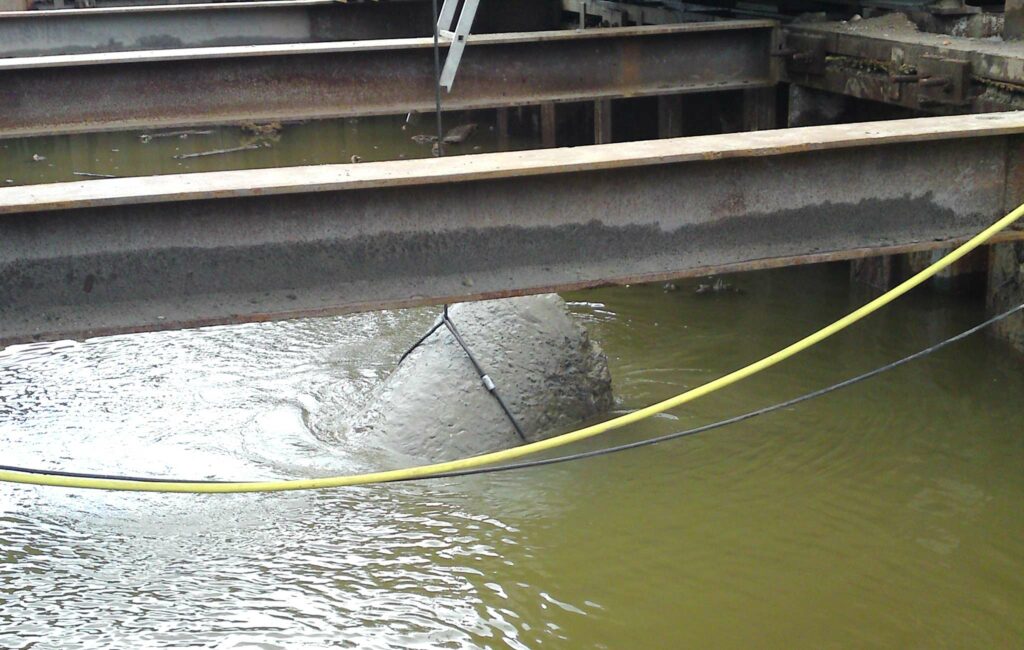
Versatile, fast
and safe
For the foundation remnants reinforced with six to twelve millimeter thick steel rebars, the small, 15 kilogram HCS8 C hydraulic Combi-Shear from Darda was still used after the splitting work. With its shear set and a cutting force of 267 kN, this device can easily cut through steel reinforcements and round bars up to 16 millimeters in diameter. When the shear set is opened, a high expansion force is also generated, which allows previously separated concrete parts to be expanded. The diver was thus able to use the HCS8 C to cut through uncracked iron and, if necessary, to push the concrete even further apart to get better access to the reinforcement. A positive side effect: the HCS8 C Combi-Shear turned out to be much faster and safer than cutting through reinforcement with hydraulic angle grinders. This method is not recommended due to the spinning tool combined with poor visibility underwater. Similarly, burning through rebar is costly, ineffective, and relatively unsafe. After each splitting and cutting operation, a truck-mounted crane safely lifted the pre-secured demolition pieces out of the deep water. A total of 30 cubic meters of concrete and reinforced concrete were salvaged.
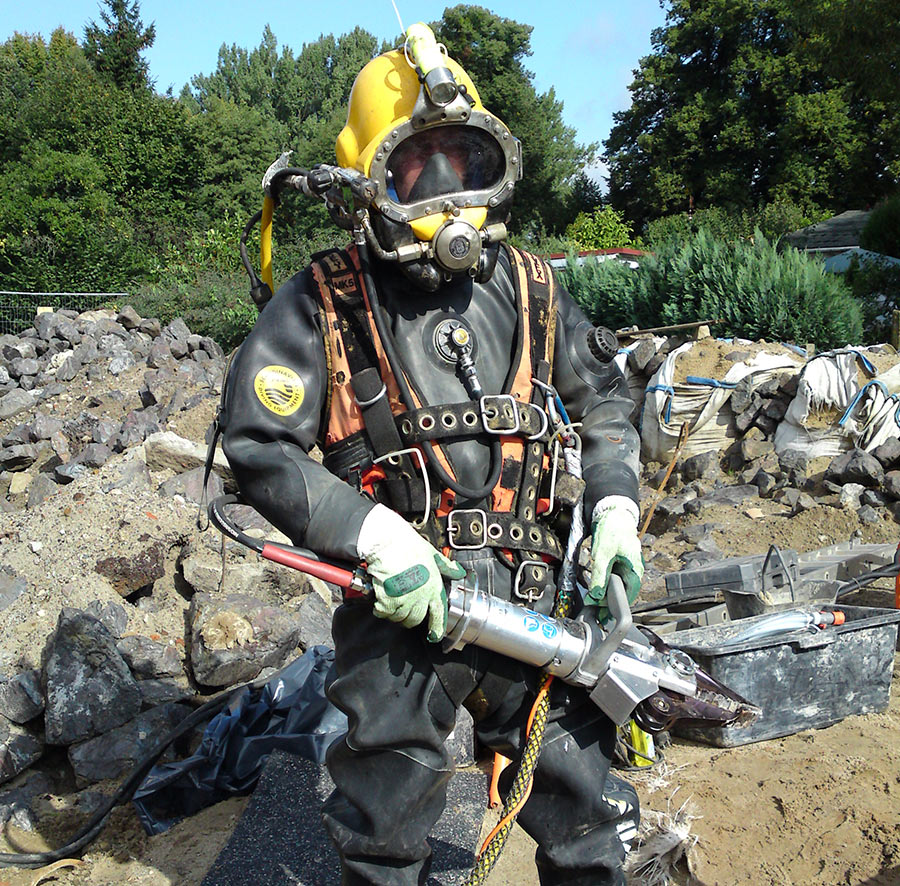
Efficient on
land as water
The concrete pieces could then be further crushed on land with the splitting equipment and the Combi-Shear for subsequent removal. The entire demolition, including all preparatory and follow-up activities, was completed in just two working days (16 working hours). This was only possible in this short time because the demolition professionals of TAI GmbH from Falkenhagen used and competently applied the most suitable equipment for this task. The company confirmed that it was not only able to achieve a significant time saving with the Darda hydraulic splitting tool, but also that there are no comparably good alternatives to controlled splitting, especially.


